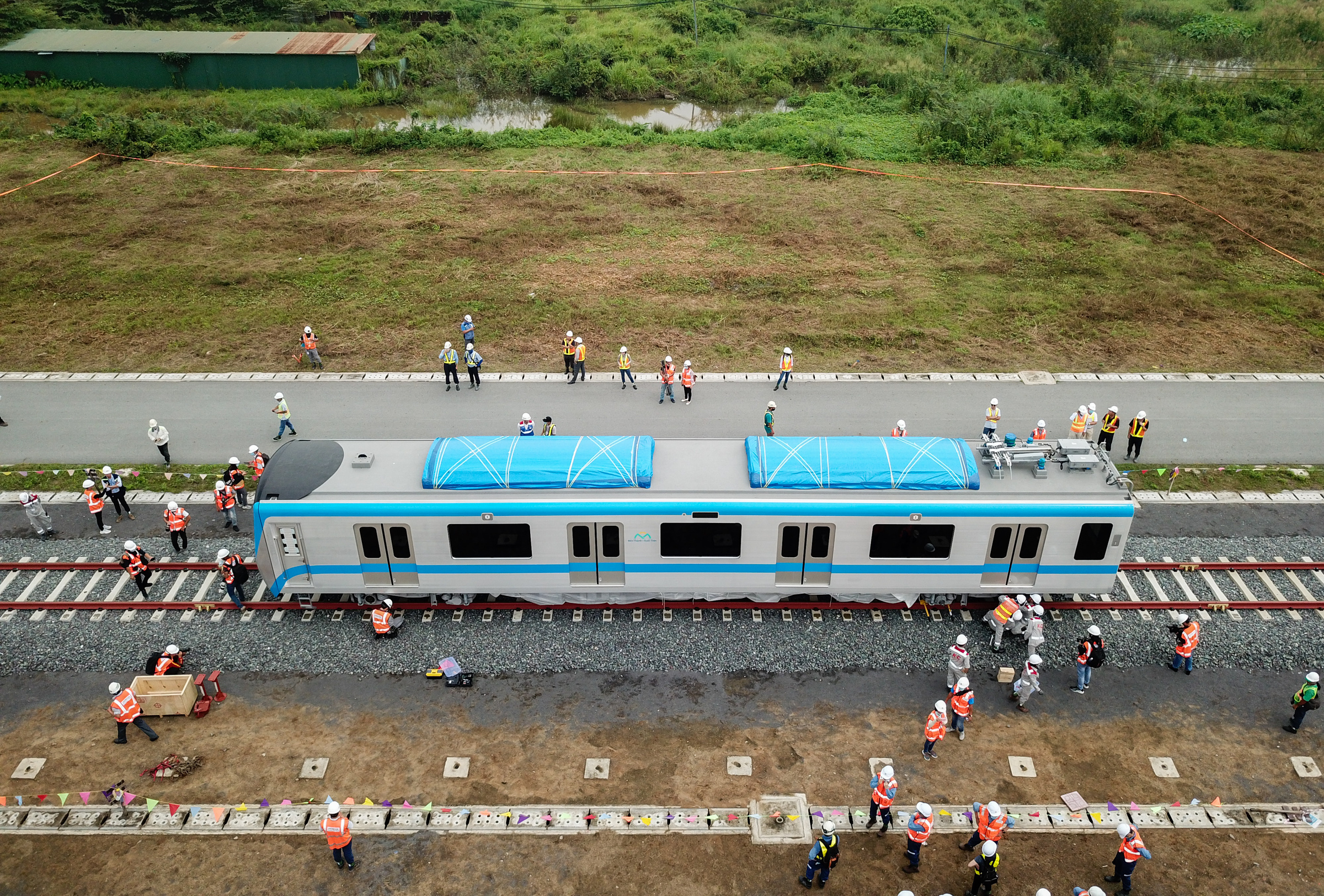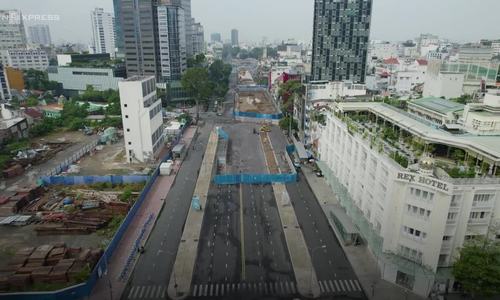HCMC’s first metro line has been a long time coming, and it is yet to arrive, a full decade after work began on the project.
The primary factor in this prolonged delay has been the failure of stakeholders to anticipate problems, identify solutions and implement them in a timely manner.
Work began on Metro Line No.1, the first such project in Ho Chi Minh City, in August 2012. It was set to be completed in six years.
The line, running 19.7km between Ben Thanh Market in District 1 and Suoi Tien Theme Park in Thu Duc City, has carried with it high hopes of opening up a new mode of mass transportation and solving travel needs from the downtown area to the city’s eastern gateway.
The project was also seen as a foundation for the development of other metro lines, but 10 years on, it is still incomplete and the city is hoping that it will become operational next year.
 |
|
A metro train is installed on tracks at Long Binh Depot in HCMC’s Thu Duc City in 2020. Photo by VnExpress/Quynh Tran |
Financial hiccups have been a major part of project snags to date. To keep the project going, HCMC has had to extract fund from its budget to make advance payments more than once so that the investor, the HCMC Management Authority for Urban Railways (MAUR), could pay contractors and staff.
The tardiness in capital disbursement for the project resulted from adjustments to the project’s total investment.
At the time the city approved the project (2007), the project cost more than VND17 trillion ($743 million), which meant that it did not have to be approved by the parliament, the National Assembly.
However, two years later, its cost was raised to VND47.3 trillion, including VND41.8 trillion in official development assistance (ODA) from the Japan International Cooperation Agency (JICA).
The then prime minister allowed the city to adjust the project’s total investment in 2011, but with the new cost, the project had to be approved by the parliament.
It was only in 2019 that the National Assembly approved the new investment estimate for the project, reducing the proposed sum by more than VND3 trillion to VND43.7 trillion. Without the NA’s approval, the central government could not allow the city to access ODA loans.
The lack of funds had caused the project’s consultant, NJPT, a consortium led by Japan’s Nippon Koei, to put on hold several services, including a course to train drivers and staff for the metro that it was to organize in collaboration with Hanoi’s Vietnam Railway College. It had no money to pay the teachers and the school, the consortium said.
Technical snags
Apart from financial woes, the construction process of Metro No. 1 encountered several technical problems that affected the project’s progress.
In October 2020, one of the Elastomeric Laminated Bearing pads was found to have fallen from its position between two beams on the elevated section in Thu Duc City.
These pads are made from high-purity elastomers that encapsulate layered internal steel reinforcing plates and are designed for use in bridge and building construction for beam support. The incident was detected after cracks were seen along the elevated section.
Then in January last year, as inspectors studied the problem, another pad was found to have deviated from its position. Later in the year, four more pads had deviated.
Soon after, the contractor, a consortium comprising Vietnam’s Civil Engineering Construction Corporation No. 6 (Cienco 6) and Japan’s Sumitomo Corporation, said they had fixed the issue, but did not clarify how and why the pad had fallen and deviated and what the impacts would be on the life and safety of the project.
Late last year, the investor MAUR proposed that JICA, which funds the project, has one more independent consultant to ensure objectivity while investigating the beam faults. Until now, it is not clear if such a consultant has been appointed.
Personnel problems
Another roadblock in the project’s progress was a crisis in human resources.
Between 2018 and 2019, 55 people at the MAUR, including its head Le Nguyen Minh Quang and deputy head Hoang Nhu Cuong, quit their jobs, citing personal reasons. The city then assigned Bui Xuan Cuong, director of the municipal Transport Department, to work as head of the board to continue the project.
And around this time, the appearance of Covid-19 applied some heavy brakes.
According to the MAUR, because of the pandemic, Vietnam tightened border controls; and as a result, Japanese experts could not travel to Vietnam; and the import of building materials was interrupted.
Then, during the fourth outbreak last year, HCMC imposed city-wide social distancing for four months from May to September, which caused further delays.
In the latest move, HCMC’s chairman Phan Van Mai signed a decision last week to resume work with the metro line’s consulting unit, NJPT, so that the project can continue.
He has requested that the project’s investor, MAUR, must boost progress and prevent the project from falling behind schedule again.
Vo Kim Cuong, former deputy chief architect for HCMC, said since metro line No.1 was the first project of its kind in the city, many policies and regulations had to be adjusted at various junctures, and this was a lesson that need to be learned well, so as to avoid similar mistakes for other metro lines that are still under construction.
HCMC plans to build eight metro lines running a total of 220 kilometers.
Shopkeepers on HCMC’s Le Loi Road, a major shopping area, are eagerly awaiting the removal of barriers put up for the construction of Metro Line No.1 to revive their business. Video by VnExpress/Tuan Viet
- Reduce Hair Loss with PURA D’OR Gold Label Shampoo
- Castor Oil Has Made a “Huge” Difference With Hair and Brow Growth
- Excessive hair loss in men: Signs of illness that cannot be subjective
- Dịch Vụ SEO Website ở Los Angeles, CA: đưa trang web doanh nghiệp bạn lên top Google
- Nails Salon Sierra Madre
 VnExpress News The News Gateway of Vietnam
VnExpress News The News Gateway of Vietnam






